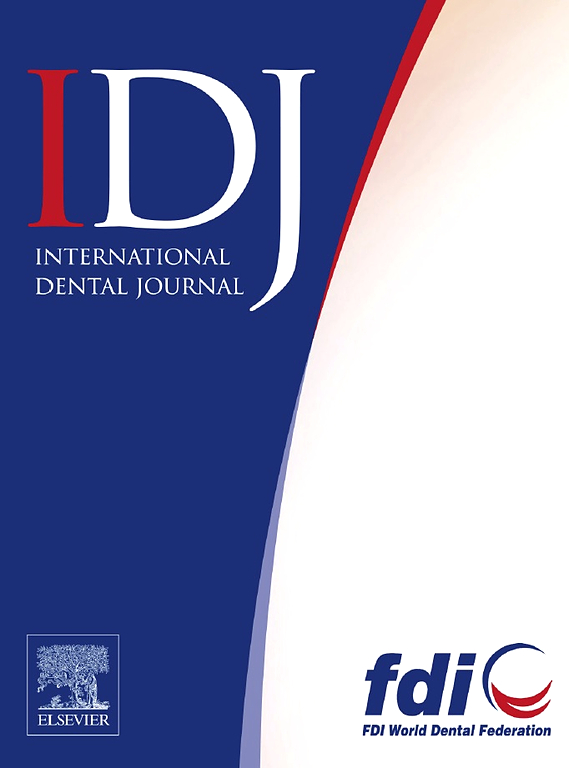Emerging Roles of Periodontal Pathogen–Derived Outer Membrane Vesicles in NAFLD
IF 3.2
3区 医学
Q1 DENTISTRY, ORAL SURGERY & MEDICINE
引用次数: 0
Abstract
The rising incidence of nonalcoholic fatty liver disease (NAFLD) poses a great socioeconomic burden worldwide. Also, periodontitis is the most common chronic inflammatory disease caused by a group of oral pathogens, affecting both oral health and systemic conditions, especially liver disease. Although accumulating evidence has elucidated an association between periodontal pathogens and NAFLD, the role of periodontal pathogen–derived outer membrane vesicles (OMVs) has not yet been clarified. In this comprehensive review, we aim to address this gap by summarising the progression and pathogenesis of NAFLD and revealing the relationship between periodontal disease and NAFLD multidimensionally. Additionally, this review sheds light on the multifunctional roles of periodontal pathogens OMVs and emphasises that periodontal pathogen–derived OMVs promote the development of NAFLD by stimulating Kupffer cells to produce inflammatory factors and inducing the activation of Hepatic stellate cells. However, it is still controversial whether periodontal pathogen–derived OMVs can be transferred to the liver through the bloodstream route or the oral-gut-liver axis. This highlights the pressing need for continued research efforts to develop new and optimised research schemes to observe the formation of the systemic distribution pathway of periodontal pathogen–derived OMVs. Finally, it is notable that there are currently no relevant clinical treatment guidelines to make specific provisions on controlling the level of periodontal pathogen–derived OMVs in patients with NAFLD. Guidelines developed based on our findings may contribute to the standardisation of practices. It can also provide effective strategies and potential therapeutic targets for NAFLD patients with periodontitis to alleviate the development of NAFLD diseases by inhibiting periodontal pathogens OMVs.
牙周病原体来源的外膜囊泡在NAFLD中的新作用
非酒精性脂肪性肝病(NAFLD)发病率的上升在世界范围内造成了巨大的社会经济负担。此外,牙周炎是由一组口腔病原体引起的最常见的慢性炎症性疾病,既影响口腔健康,也影响全身状况,特别是肝脏疾病。尽管越来越多的证据已经阐明了牙周病原体与NAFLD之间的联系,但牙周病原体来源的外膜囊泡(omv)的作用尚未明确。在这篇全面的综述中,我们旨在通过总结NAFLD的进展和发病机制,并从多维度上揭示牙周病和NAFLD之间的关系来解决这一空白。此外,本文综述了牙周病原体omv的多功能作用,并强调牙周病原体来源的omv通过刺激Kupffer细胞产生炎症因子和诱导肝星状细胞活化来促进NAFLD的发展。然而,牙周病原体来源的omv是否可以通过血液途径或口腔-肠-肝轴转移到肝脏仍存在争议。这表明,迫切需要继续开展研究工作,开发新的和优化的研究方案,以观察牙周病原体来源的omv的系统分布途径的形成。最后,值得注意的是,目前尚无相关的临床治疗指南对控制NAFLD患者牙周病原菌源性omv水平做出具体规定。根据我们的发现制定的指南可能有助于实践的标准化。通过抑制牙周病原菌omv,为NAFLD合并牙周炎患者提供有效的治疗策略和潜在的治疗靶点。
本文章由计算机程序翻译,如有差异,请以英文原文为准。
求助全文
约1分钟内获得全文
求助全文
来源期刊

International dental journal
医学-牙科与口腔外科
CiteScore
4.80
自引率
6.10%
发文量
159
审稿时长
63 days
期刊介绍:
The International Dental Journal features peer-reviewed, scientific articles relevant to international oral health issues, as well as practical, informative articles aimed at clinicians.
 求助内容:
求助内容: 应助结果提醒方式:
应助结果提醒方式:


